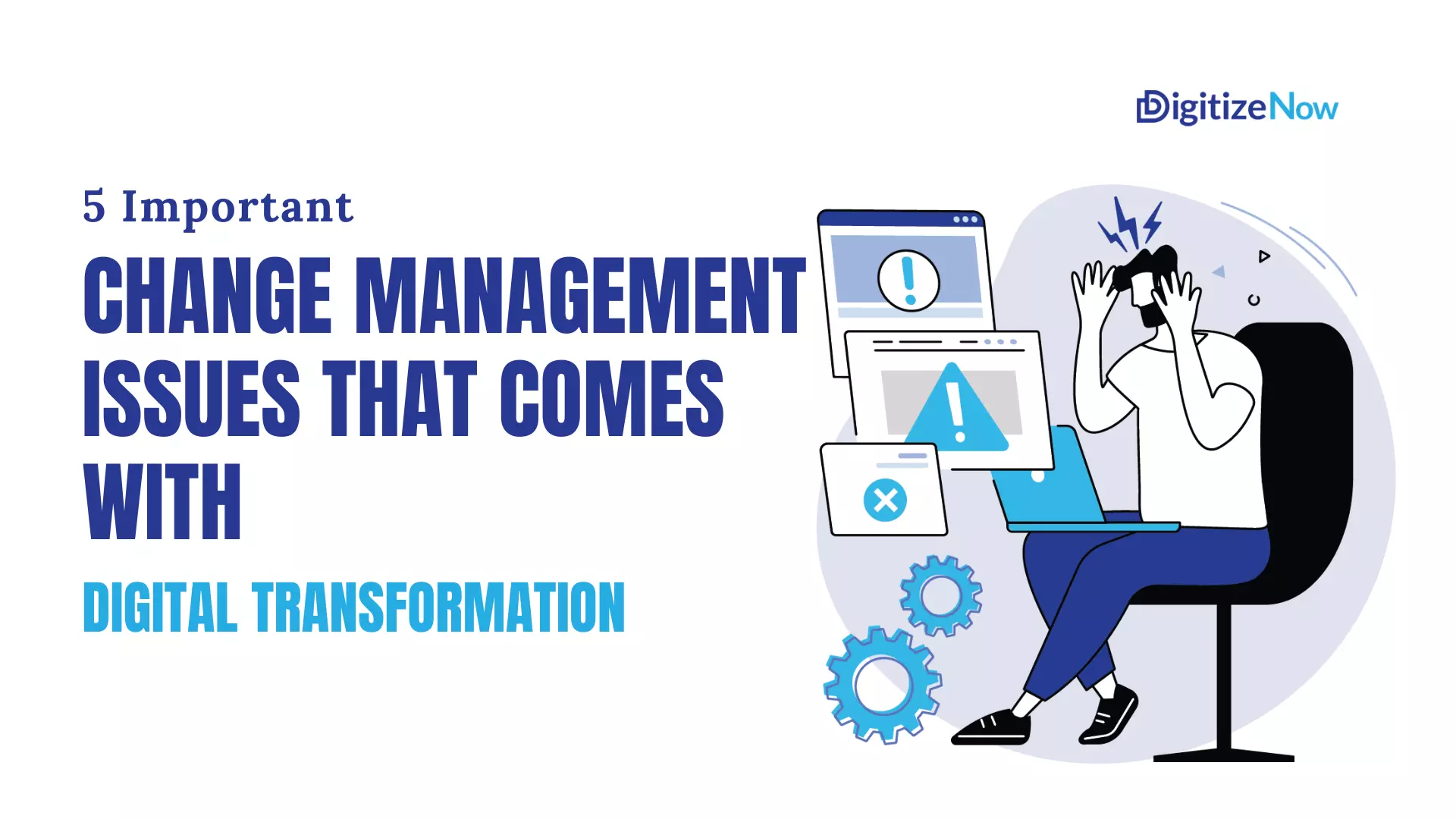Going through the digital transformation journey, adopting the challenges of change management is what should come naturally in an organization. Change is the only constant that happens not only in the workplace but also in every aspect of life.
In the ever-evolving world of technology, “digital transformation” has become a common buzzword– it’s a profound change that organizations are adopting to stay competitive and relevant in their industries.
Digital transformation isn’t a destination; it’s a continuous journey fueled by innovation, agility, and a commitment to leveraging technology for sustainable growth.
This transformative journey goes beyond merely adopting new technologies; it incorporates a complete reimagining of processes, strategies, and organizational culture.
But first, let’s dive into the intricacies and challenges of change management to understand why overcoming the challenges is necessary at this stage.
Why do issues or challenges arise with change management?
The change management landscape is dotted with complexities that arise from various factors. As businesses strive for continuous improvement and adapt to evolving landscapes, the intricate mix of reshaping processes and cultures becomes inevitable.
As businesses embark on this digital transformative path, the human element is a crucial aspect often underestimated or overlooked. Employees are the backbone of any organization and can either be the catalysts or stumbling blocks in this journey of change.
Employee resistance to change is a common challenge in organizations. It arises from the inherent human tendency to prefer familiar routines over the uncertainties associated with complex organizational changes.
Lack of communication is another factor fuelling the issues caused by change management. A lack of transparency in communication can cause misunderstandings and hinder the implementation of change. Conversely, effective communication is the glue that binds change initiatives together.
Change management faces hurdles in the form of leadership gaps, where insufficient support can derail the transformative journey.
Technology adoption in organizations adds complexity. This is why integrating new technologies into existing workflows requires careful planning and strategic alignment. Ineffective integration can disrupt workflows and reduce productivity.
Recognizing and addressing change management challenges is vital for successful change strategies, enabling organizations to thrive through change.

5 Challenges of Change Management
With suitable preparation of change strategy, the right resources, and the attitude to begin driving successful change, you will face some hurdles. Understanding these five significant change management challenges will help your organization navigate the transition to success in the digital transformation era.
1.Resistance to Change: Exploring the Human Side
Coming to the part of understanding the human factor in a company, when introduced to change, the first ones to face it are the employees. Change is hard. And it gets even more challenging when businesses try to introduce new processes and technologies into the system.
Due to poor attitudes and personal priorities, instead of working together towards common goals, people find it difficult for organizations to achieve positive change.
Other factors contributing to this resistance include:
- The fear of the unknown
- Job security
- Skills becoming outdated
- Effect on their performance
- Lack of understanding and knowledge
- Communication gaps
Understanding these few factors will help businesses address the root causes of employee resistance.
Companies can use strategies to guide employees through change. This might involve clear communication about why the changes are happening, providing support and training, and involving employees in the process.
2. Lack of Support and Leadership
Adopting change is a journey, and having good leaders is like having a reliable guide with the correct roadmap. They play a crucial role in making sure the transition goes smoothly.
When there is unclear communication, indecision, or a lack of involvement in the change process, there is surely a possibility of inadequate leadership support.
It is a crucial drawback when leaders are only partially on board with the changes. Employees might feel confused, and there might be a need for a more precise direction. These are signs that the support from leaders might need to be stronger during the period of change.
When organizational changes happen in a company, leaders are like captains, leading everyone in the right direction, and therefore, a true leader prepares his team with knowledge even before the transition starts. They guide to ensure everyone is on the same page. This support comes with a vision when the leader is knowledgeable about the technological and cultural needs of the team.
To smoothen the challenges of change management, leaders need to be actively involved in the process of transition. This involves clear communication about why changes are happening, showing support for employees adapting to new ways, and leading by example.
3. Lack of Clear and Effective Communication
Communication is like a bridge that connects everyone in a company. Unfortunately, there are times when communication breaks down, causing confusion and challenges.
During a digital transformation and continuous improvement, if communication isn’t clear, employees might feel lost or unsure about the changes happening. This communication breakdown can lead to resistance.
Right communication strategies must be initiated before the change management transition begins. It should include information exchange about the need for the transition, the paths of the transition, and the after-effects of it. Each team member should know the cause and effect of the transition, irrespective of their designated position.
Senior management can use different channels to share correct information with team members. The communication channel should include but not be limited to face-to-face meetings, emails, instant message platforms, and teleconferencing.

4. Insufficient Training and Skill Gaps
Shortage of proper training and extending gaps in skills are two significant challenges of change management, and it can create crucial setbacks in the process.
When a company goes through changes, the new skills needed for transformation might differ from what employees currently have. Identifying these gaps helps the company know what areas need to be upgraded to adapt new processes or technologies smoothly.
If employees are unfamiliar with the tools or methods required for digital transformation, the organization can help them with the training programs. On the one hand, this training helps them to learn, and on the other hand, they become more confident in applying these new skills.
Providing a step-by-step guide and creating learning opportunities for employees is the key. It’s not just about learning once; it’s about continuous improvement, ensuring employees stay updated with the skills needed for the evolving work environment.
Through well-designed training programs, companies can empower employees to embrace change confidently, reducing resistance and fostering a culture of continuous learning.
5. Insufficient Training and Skill Gaps
Shortage of proper training and extending gaps in skills are two significant challenges of change management, and it can create crucial setbacks in the process.
When a company goes through changes, the new skills needed for transformation might differ from what employees currently have. Identifying these gaps helps the company know what areas need to be upgraded to adapt new processes or technologies smoothly.
If employees are unfamiliar with the tools or methods required for digital transformation, the organization can help them with the training programs. On the one hand, this training helps them to learn, and on the other hand, they become more confident in applying these new skills.
Providing a step-by-step guide and creating learning opportunities for employees is the key. It’s not just about learning once; it’s about continuous improvement, ensuring employees stay updated with the skills needed for the evolving work environment.
Through well-designed training programs, companies can empower employees to embrace change confidently, reducing resistance and fostering a culture of continuous learning.















